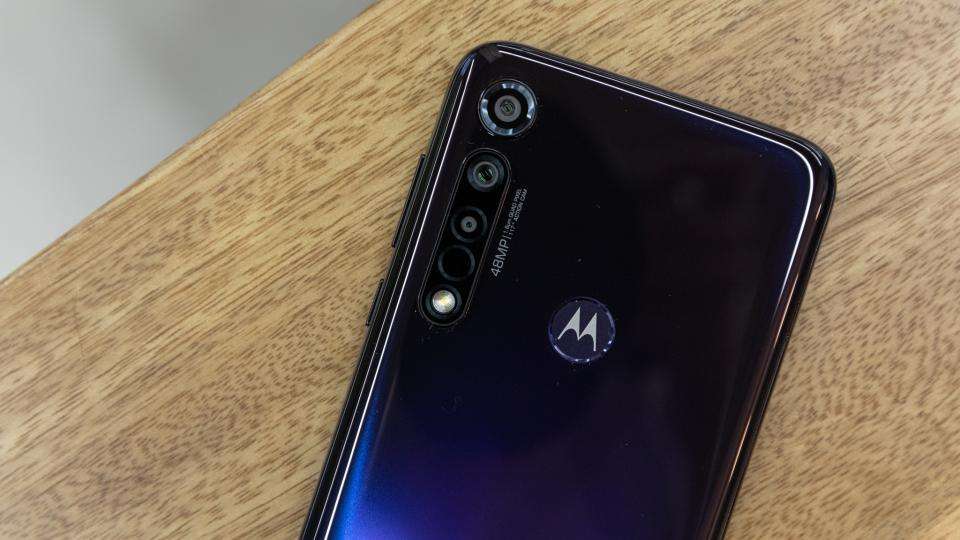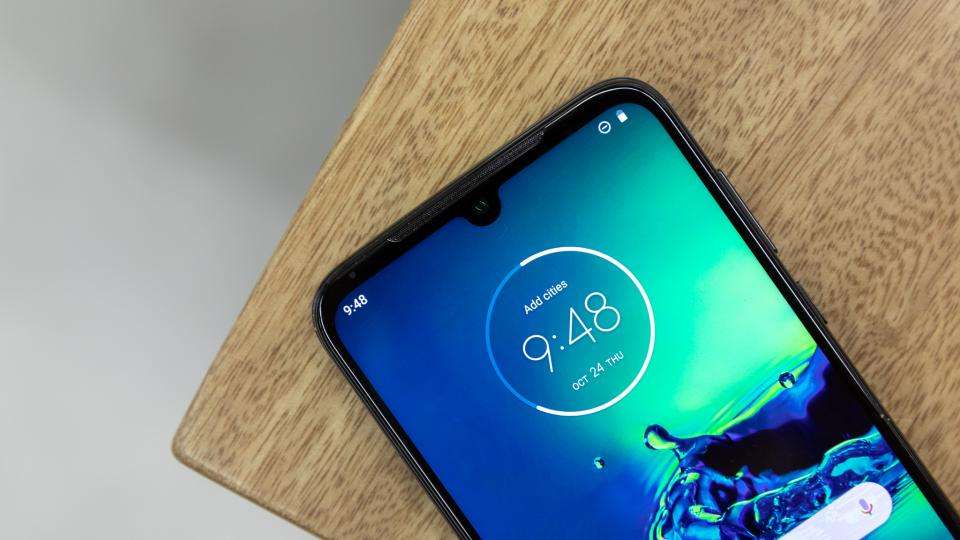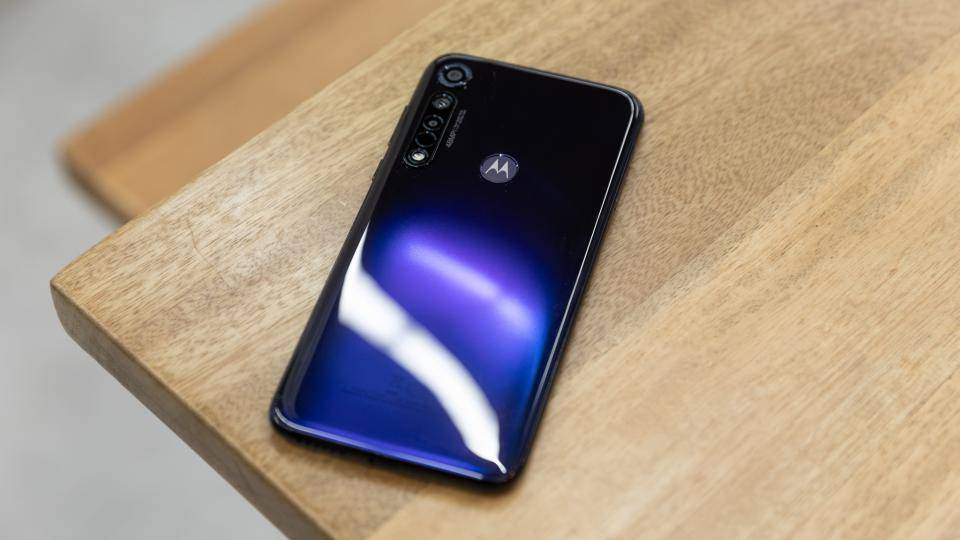Motorola has had a busy 2019 and, just when we thought the company would be wrapping up for the year, it’s hit us with four new products. Alongside the resurrection of the Moto 360 smartwatch , the company has pushed out three new phones and, given the Moto G8 reviewed here is the Plus version of a phone that doesn’t exist yet, you’d better believe there’s more to come. You should know what you’re getting with Moto G devices at this point. For the past six years, barring a blip in 2017 with the G5, they’ve been the gold standard of budget Android phones. Does the Moto G8 Plus continue the trend?
Motorola Moto G8 Plus review: What you need to know
The Moto G8 Plus is the newest member of the Moto G family, which became a household name back in 2013. Oddly, there’s currently no regular Moto G8; the Plus version reviewed here is all we have for the moment.

Motorola Moto G8 Plus review: Price and competition
Those are pretty compelling specs considering Motorola is charging £239 for the phone. It’s also helped by the fact there’s not a whole lot of competition at this price point, other than the phone it’s superseding: the £239 Moto G7 Plus .
Elsewhere, two other options spring to mind and both of them are from Chinese company, Xiaomi. The Redmi Note 7 is pretty damned incredible value at £179 , while the Pocophone F1 is even better at £270 , as it uses the Snapdragon 845 processor found in last year’s most expensive Android phones.
Motorola Moto G8 Plus review: Design
Since the G6, Moto handsets have been able to compete with the very best in terms of looks and the Moto G8 Plus continues this tradition, by and large. The 6.3in screen dominates the front, with reasonably thin bezels all the way around. This means the front-facing camera requires a notch but it’s one of those semi-circular teardrop-style ones, and it’s pretty inoffensive.


Motorola Moto G8 Plus review: Screen
The Moto G8 Plus has a large 6.3in, 19:9 aspect-ratio display. At this price, you’re getting IPS LCD rather than AMOLED but it’s a solid performer all things considered.

Motorola Moto G8 Plus review: Performance
Powering the Moto G8 Plus is a Qualcomm Snapdragon 645 processor. This isn’t one we’ve encountered in our reviews to date: it’s an octa-core processor with cores split evenly between 2GHz and 1.8GHz and it’s backed by 4GB of RAM and 64GB of internal storage.
The Geekbench 4 test shows there’s a small but significant boost over the G7 Plus in terms of multi-core performance, and it’s a nose ahead of the Redmi Note 7, too. The Pocophone F1 is still miles ahead, though, proving once again that if performance is a priority, an older flagship chip is often a better bet than a newer mid-range one.
In terms of graphics performance, the positions of the Redmi and the Moto G8 Plus are flipped, but there isn’t much in it: the cheaper Xiaomi is 3fps better than the Moto G8 Plus, a result that, in turn, is 4fps superior to the Moto G7 Plus. Still, it feels a bit academic to be quibbling over single-digit frame-rate differences when the Pocophone F1 is so far superior to any of them.
The Moto G8 Plus’ 4,000mAh battery, however, helps the phone to a winning result in our video-rundown test. With all phones, we play a looped video with the display calibrated to a brightness of 170cd/m 2 and engage Airplane mode to ensure a level playing field. With that all set up, the Moto G8 Plus lasted 17hrs 55mins. Not only is that very good in its own right, it’s also over seven-and-a-half hours more than the G7 Plus achieved in the same test.
Motorola Moto G8 Plus review: Camera
So far, so good for the Moto G8 Plus, but not that much reason to upgrade from last year’s model in terms of performance. But with a 48-megapixel main camera, can the G8 Plus tip the balance?
Unfortunately, we don’t have our review G7 Plus any more, so we took the next best thing – the regular G7 – onto the roof for camera comparisons. It wasn’t quite as good as its sibling – a 12-megapixel f/1.7 main camera, rather than the 16-megapixel number on the Plus – but it’s good enough to give you an idea of the difference between generations.
Not much difference in terms of picture quality, with a similar amount of detail captured, but the newer version definitely produces a brighter shot.
While not offering a great deal of difference outside, the G8 Plus’ brighter aperture really comes into its own for low-light indoor photography. As you can see in the picture below, not only are the Moto G8 Plus’ photos sharper with less noise, but colour accuracy is also better. Compare the hair on the woman in the photograph for evidence of that.
Selfies are fine. There’s a beautifying option switched on by default, but it’s far from the worst offender we’ve seen here as the comparison shot below shows.
In terms of video, the Moto G8 Plus offers plenty of options, but not all of them hugely practical. Its main party trick – and it’s a good one – is the action cam, which lets you shoot landscape videos while holding the phone in portrait mode. No more video clips with aspect ratios wholly unsuited for YouTube. This mode is available in either HD, FHD at 30fps or FHD at 60fps. Why the breakdown? Because if you go for 60fps, you lose image stabilisation, and the resulting footage is essentially unusable unless you pop your phone on a tripod or use a gimbal.
Motorola Moto G8 Plus review: Verdict
In all, then, the Moto G8 Plus is another fine addition to the Moto G series. The only problem is that competition is stiffer than ever – especially from China. The Xiaomi Redmi Note 7 performs pretty much the same and is £60 cheaper. Equally, if money isn’t tight, then last year’s Xiaomi Pocophone F1 offers vastly improved performance for about £30 more. The Moto is caught between two stools.











